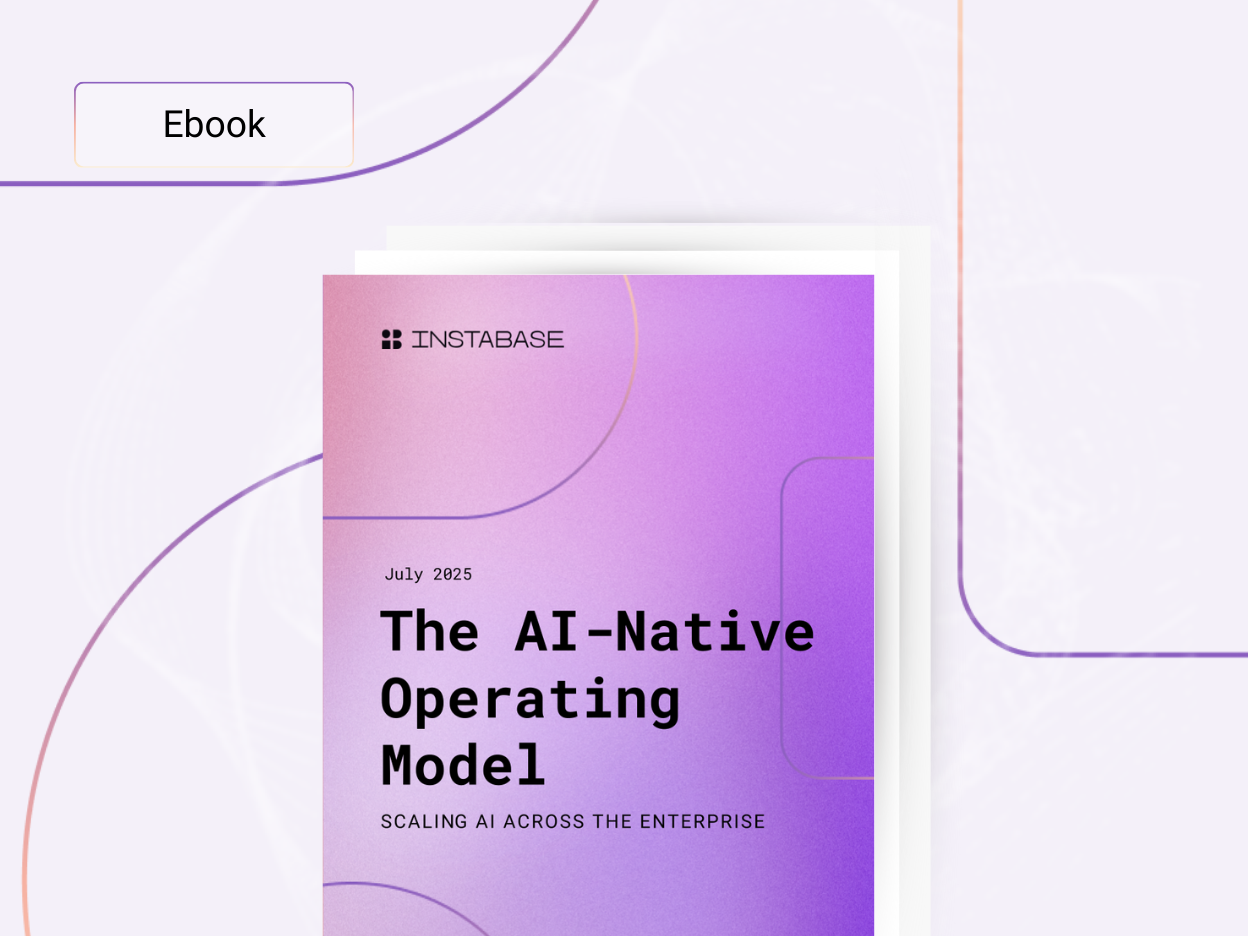
From Siloed Tools to The AI-Native Operating Model
AI has rapidly emerged as a dominant force across all sectors with businesses big and small investing heavily in machine learning, large language models, and intelligent automation. However, investment does not always result in success. Many enterprise AI initiatives never progress beyond the experimental stage, as programs often fail to deliver consistent, scalable results. Even successful ventures rarely expand beyond their initial departmental scope.
The root of this problem isn't a lack of ambition, but rather a fundamental flaw in architectural design. Many AI projects rely on "point solution" tools designed for narrow, specific tasks. While these tools might excel at extracting information from a particular document type or automating a single workflow, their limitations become apparent when organizations attempt to scale these successes. They lack interoperability, struggle to adapt to new data formats or types, and often create rigid, quickly outdated systems that are difficult to integrate. The result is an expensive, fragmented system characterized by disconnected tools, data silos, and frustrated teams.
The AI-Native Operating Model
The solution isn't simply to acquire more AI tools, but to undergo a fundamental shift in mindset and operating model. Instead of treating AI as a point solution add-on, forward-thinking enterprises are integrating it into the core of their operations. They are adopting a systemic approach that views AI as the foundational layer transforming their model to an AI-native enterprise.
Central to this transformation is a unified, scalable AI platform. This platform acts as an orchestrator for models, workflows, and unstructured data throughout the entire organization. It's not a tool for a single task, but a comprehensive system designed to support the entire business with end-to-end impact.
The success of this transformation hinges on how an organization handles unstructured data, the enterprise's most valuable information. Contracts, scanned forms, emails, spreadsheets, PDFs, and handwritten notes, are rich in insight but poor in structure. Traditional systems are ill-equipped to handle this, and most off-the-shelf AI solutions struggle with their inherent nuances.
The AI Platform Is Critical
The AI-native operating model requires a platform with robust capabilities for interpreting and reasoning over unstructured content. These platforms must be able to process not just text, but varying layouts, visuals, signatures, tables, and complex formats. They need to support a wide range of use cases, from basic FAQs to sophisticated multi-step reasoning tasks utilizing intelligent agents that can act upon, not just summarize, the information they process.
And platform requirements extend well beyond support for unstructured data and agents. To be successful the AI platform should provide:
- Robust platform integrations
- Vertical & horizontal scaling
- Technical and non-technical users support
- Data usage and governance controls
Ultimately, becoming an AI-native enterprise is about more than deploying a powerful platform. It demands a clear roadmap, encompassing an assessment of the current state, identification of quick wins, and strategies for scaling success across departments. It's a journey of change management, team enablement, and a fundamental re-evaluation of decision-making processes.
To gain a deeper understanding of how leading enterprises are navigating this transformation, including the necessary steps, potential challenges, and key opportunities, download our comprehensive ebook:
The AI-Native Operating Model: Scaling AI Across the Enterprise
This ebook delves into the essential platform components, strategies, and organizational playbooks that enable successful AI programs at scale.




